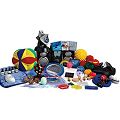
Often used to promote sensory integration, pediatric sensory motor developmental toys are made to stimulate and enhance a child’s development for sensory and motor skills. Sensory integration, also called sensory processing, refers to the way the nervous system receives messages from the senses and turns them into appropriate behavioral and motor responses.
Rehabmart is pleased to offer a comprehensive selection of innovative pediatric sensory motor developmental toys from esteemed top quality vendors, which include TFH, Experia-USA, Enabling Devices, and Skil-Care.
.jpg&newheight=260&quality=80)
.jpg&newheight=260&quality=80)
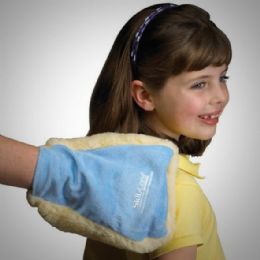

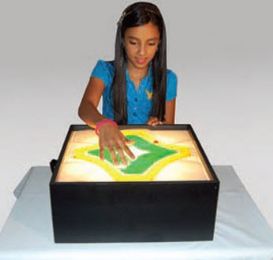
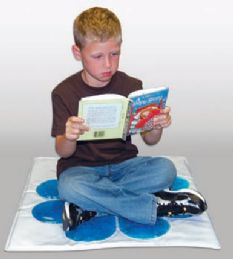
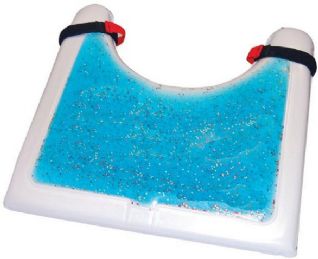
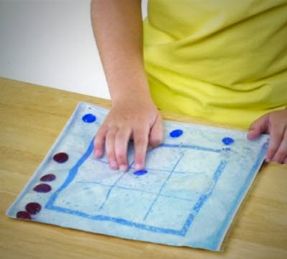
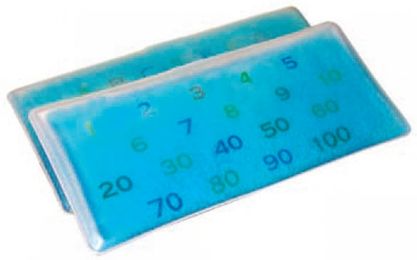
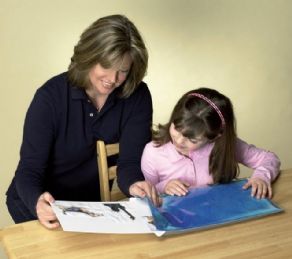
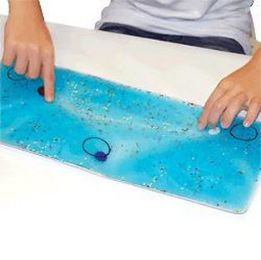
Pediatric sensory motor developmental toys can help promote sensory integration, develop important sensory motor skills, and stimulate crucial senses. They can help a child who has autism, sensory challenges, developmental delays, or other special needs.
What is Sensory Integration?
Sensory integration refers to how a child uses the information provided from the external environment and by all the sensations coming from within the body. All the senses of a child are not separate channels of information, they actually work together to give children a reliable picture of the world and their place in it. The senses integrate to form a complete understanding of who they are, where they are, and what is happening around them. Because the brain uses information about sounds, sights, smells, textures, tastes, and movement in an organized way, a child assigns meaning to their sensory experience so they know how to respond and behave accordingly.
A child who has sensory integration dysfunction has great difficulty figuring out what is going on inside and outside the body. There is no guarantee that the sensory information a child is working with is accurate. Therefore, a child may avoid distressing or confusing sensations, or seek out more of the sensation to find out more about it. For example, a child who has difficulty integrating tactile, or touch, input may avoid unpleasant touch experiences such as getting the hands messy with sand, paint, or glue. On the other hand, a child may crave such touch input and actively seek it out. Sensory integration does not develop smoothly in a child with this dysfunction.
This is where sensory motor development toys help. They focus on three basic senses; vestibular, tactile, and proprioceptive. They allow a child to experience, interpret, and respond to different stimuli in the environment.
What are Vestibular Developmental Toys?
The vestibular system refers to the structures inside the inner ear which detect movement and changes in the position of the head. Dysfunction within this system can show up in two different ways. A child may be hypersensitive to vestibular stimulation and have fearful reactions to ordinary activities, such as slides, swings, ramps, or inclines. A child may also have trouble learning to climb or descend stairs, and may feel nervous walking or crawling on uneven surfaces. The other way is a child seeking very intense sensory experiences such as excessive jumping, whirling, or spinning.
A type of sensory motor development toy which can help a child in this condition is a balance beam. A balance beam can be used to help develop sensory and balancing skills as well as develop pediatric gross motor skills. If the beam has colored segments on it, they can help encourage a child to continue walking across the beam. Some beams have lights inside the segments, so when a child continues to step across it, each segment will activate a color to make the exercise fun and interactive.
What are Tactile Developmental Toys?
The tactile system includes the nerves under the skin’s surface which send information to a child’s brain. This information includes pain, pressure, light touch, and temperature. Dysfunction in the tactile system can be withdrawing when being touched, refusing to wear certain types of clothing and/or eat certain textured food, avoiding getting the hands dirty, and using the finger tips rather than the whole hand to manipulate objects. This type of condition may lead to a misperception of pain and/or touch and could lead to self-imposed isolation, distractibility, general irritability, and hyperactivity.
Developmental toys that can help with a tactile dysfunction are stacker toys, sensory mirrors, bead chains, textured busy boxes, sensory motor kits, activity centers, therapeutic balls, gel-filled sensory trays, sensory pillows, and activity aprons. These types of toys can encourage a child to touch the bright colors or feel the textured surfaces, especially if the toy rewards the child with enjoyable music or fun sounds to hear. Other toys may reward the child with colorful lights or other reactions that children would enjoy so they will continue to interact with the toy.
What are Proprioceptive Developmental Toys?
The proprioceptive system refers to components of joints, muscles, and tendons that provide children with a subconscious awareness of their body position. It is responsible for providing the body with the necessary signals to allow a child to sit properly in a chair, to step off a curb smoothly, or to manipulate objects using fine motor movements. Some common signs of proprioceptive dysfunction are clumsiness, difficulty manipulating small objects, eating in a sloppy manner, and resistance to new motor movement activities.
Some developmental toys which can help with proprioceptive dysfunction are stacker toys, sensory motor kits, pop toobs, activity centers, activity boxes, stimulating sensory kits, and gel-filled activity pads. These types of toys can encourage a child to move small objects with their fingers and hands with rewarding sounds, such as music or animal noises to hear. Other toys may reward children with different reactions, such as colorful lights that they would enjoy so they will continue to interact with the toy.
Evaluation and treatment of basic sensory integrative processes is performed by physical and/or occupational therapists. The therapist’s general goals are to provide a child with sensory information which helps organize the central nervous system, to help a child in modulating and/or inhibiting sensory information, and to help a child in processing a more organized response to sensory stimuli.
Hulet Smith, OT
Rehabmart Co-Founder & CEO
lb